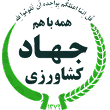Foreword
ISO (the International Organization for Standardization) and IEC (the International Electrotechnical Commission) form the specialized system for worldwide standardization. National bodies that are members of ISO or IEC participate in the development of International Standards through technical committees established by the respective organization to deal with particular fields of technical activity. ISO and IEC technical committees collaborate in fields of mutual interest. Other international organizations, governmental and non-governmental, in liaison with ISO and IEC, also take part in the work. In the field of conformity assessment, the ISO Committee on conformity assessment (CASCO) is responsible for the development of International Standards and Guides.
International Standards are drafted in accordance with the rules given in the ISO/IEC Directives, Part 2.
Draft International Standards are circulated to the national bodies for voting. Publication as an International Standard requires approval by at least 75 % of the national bodies casting a vote.
Attention is drawn to the possibility that some of the elements of this document may be the subject of patent rights. ISO shall not be held responsible for identifying any or all such patent rights.
ISO/IEC 17025 was prepared by the ISO Committee on conformity assessment (CASCO).
It was circulated for voting to the national bodies of both ISO and IEC, and was approved by both organizations.
This second edition cancels and replaces the first edition (ISO/IEC 17025:1999), which has been technically revised.
پیشگفتار
ISO(سازمان بین المللی استانداردسازی) و IEC (کمیسیون بینالمللی الکتروتکنیکی)، سیستم تخصصی استانداردسازی جهانی را تشکیل میدهند. مراجع بینالمللی عضو ISO یا IEC از طریق کمیتههای فنی که توسط سازمانهای مربوطه برای فعالیت در زمینههای خاص فعالیتهای فنی تشکیل شده اند، برای توسعه استانداردهای جهانی فعالیت میکنند. کمیتههای فنی ISO و IEC در زمینههایی با منافع مشترک همکاری میکنند. دیگر سازمانهای بین المللی، دولتی یا غیر دولتی، در ارتباط باISO و IEC نیز در این کار شرکت میکنند. در زمینه ارزیابی انطباق، کمیته ارزیابی انطباق ISO(CASCO) مسئول توسعه استانداردها و راهنماهای بینالمللی است.
پیشنویس استانداردهای بینالمللی مطابق با قوانین موجود در ISO/IEC Directive، بخش 2 تهیه میشود.
پیشنویس استانداردهای بین المللی برای رایگیری به مراجع بینالمللی ارسال میشود. انتشار آنها به عنوان استاندارد بینالمللی نیازمند تصویب توسط حداقل 75% مراجع بینالمللی
رای دهنده است.
رای دهنده است.
توجه شود که بعضی از مطالب این مدرک ممکن است دارای حق امتیاز باشند. ISO هیچ گونه مسئولیتی را در قبال شناسایی حقوق امتیاز بر عهده نمیگیرد.
ISO/IEC 17025 توسط کمیته ارزیابی انطباق ISO (CASCO) تهیه شده است.
این استاندارد برای رایگیری به ISO و IEC ارسال شد و توسط هر دو سازمان تصویب شد.
این ویرایش (ویرایش دوم)، ویراش اول
(ISO/IEC 17025:1999) که از نظر فنی بازنگری شده را منسوخ و جایگزین آن شده است.
(ISO/IEC 17025:1999) که از نظر فنی بازنگری شده را منسوخ و جایگزین آن شده است.
Introduction
The first edition (1999) of this International Standard was produced as the result of extensive experience in the implementation of ISO/IEC Guide 25 and EN 45001, both of which it replaced. It contained all of the requirements that testing and calibration laboratories have to meet if they wish to demonstrate that they operate a management system, are technically competent, and are able to generate technically valid results.
The first edition referred to ISO 9001:1994 and ISO 9002:1994. These standards have been superseded by ISO 9001:2000, which made an alignment of ISO/IEC 17025 necessary. In this second edition, clauses have been amended or added only when considered necessary in the light of ISO 9001:2000.
Accreditation bodies that recognize the competence of testing and calibration laboratories should use this International Standard as the basis for their accreditation. Clause 4 specifies the requirements for sound management. Clause 5 specifies the requirements for technical competence for the type of tests and/or calibrations the laboratory undertakes.
Growth in the use of management systems generally has increased the need to ensure that laboratories which
form part of larger organizations or offer other services can operate to a quality management system that is
seen as compliant with ISO 9001 as well as with this International Standard. Care has been taken, therefore,
to incorporate all those requirements of ISO 9001 that are relevant to the scope of testing and calibration
services that are covered by the laboratorys management system.
Testing and calibration laboratories that comply with this International Standard will therefore also operate in
accordance with ISO 9001.
مقدمه
اولین ویرایش (1999) این استاندارد بین المللی حاصل تجربیات وسیع در پیادهسازی ISO/IEC Guide25 و EN 45001میباشد که اکنون این استاندارد جایگزین هر دو آنها گردیده است. برای آزمایشگاههای آزمون و کالیبراسیونی که قصد دارند وجود یک سیستم مدیریت، صلاحیت فنی و توانایی تولید نتایج فنی معتبر را اثبات کنند، اولین ویرایش این استاندارد شامل تمامی الزاماتی میشد که آنها باید برآورده نمایند.
در اولین ویرایش به استانداردهای ISO 9001:1994و
ISO9002:1994 اشاره شده بود. استاندارد ISO 9001:2000 جایگزین این استانداردها شد و استفاده از ISO/IEC 17025 را ضروری ساخت. در ویرایش دوم این استاندارد، اصلاحات یا اضافات در بندهای استاندارد با توجه با استاندارد
ISO 9001:2000 انجام شد است.
ISO9002:1994 اشاره شده بود. استاندارد ISO 9001:2000 جایگزین این استانداردها شد و استفاده از ISO/IEC 17025 را ضروری ساخت. در ویرایش دوم این استاندارد، اصلاحات یا اضافات در بندهای استاندارد با توجه با استاندارد
ISO 9001:2000 انجام شد است.
مراجع اعتبار دهنده که صلاحیت آزمایشگاههای آزمون و کالیبراسیون را تصدیق میکنند، بایستی این استاندارد بینالمللی را به عنوان مبنای اعتباردهی بکار گیرند. بند 4 الزامات مرتبط با مدیریت صحیح را مشخص میکند. بند 5 شامل الزاماتی است که صلاحیت فنی آزمایشگاه را برای انجام آن دسته از آزمونها و یا کالیبراسیونهایی که در آزمایشگاه انجام میشوند، مشخص مینماید.


